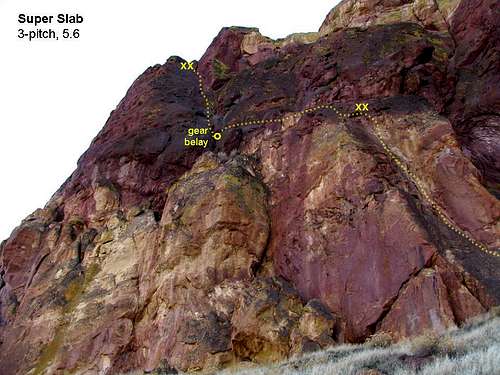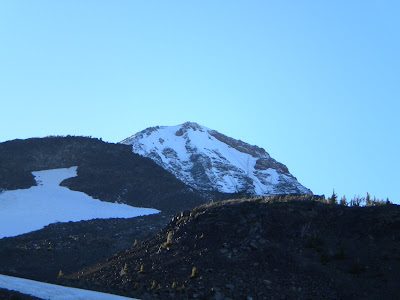
The time it has taken for me to progress in climbing and mountaineering has long exceeded what I ever would have imagined. This process has become a humbling lesson in patience and perseverance. There have been many factors limiting my progress - finances, physical injuries (ACL and meniscus injury from a tweaked landing on a crash pad at the gym), inconsistent training, flaky climbing partners, and an absence of a consistent mentor.
A lesser, but obvious issue, was also the lack of ideal alpine climbing. Oregon is known for many things, but it pales in comparison to the Northern Cascade range, the Rockies, and the Sierra Nevadas (not to mention Alaska) for mountaineering. Sure, we have Hood - the birth place of the Mountain Rescue Association, and a great source of easy to moderate snow and ice routes. However, Oregon also lacks an abundance of something that modern alpinists cherish; frozen vertical ice and waterfalls. This is one of the reasons Oregon lost one of our greatest resident mountaineers, Steve House, to an area outside Ouray.
Not only is it enjoyable to climb these sometimes dangerous structures, but it also hones the skills needed for more technical and demanding alpine routes. But because of the extreme lack of available ice, I have not pursued investing in the specialized equipment or learning waterfall ice technique beyond academic observation, until recently a friend and East Coast ice climbing enthusiast caught me on my day off, during the tail end of a cold snap that turned Paulina Falls into something worth (read: somewhat safe) climbing. He had the willingness to initiate me in my first attempt at frozen waterfalls, pushing me to complete a mixed condition WI 4 +.
I am hooked.




The crux was extremely difficult and precarious, with a free hanging block of large icicles in excess of 500 pounds, and my lack of conditioning showed, however I was able to fight my way to the top with only a cut nose, a bruised cheekbone, pumped forearms, and a smile. My friend suffered a few large blocks to his helmeted bean which were sent down by my indelicate thwacking of my ice tools, though he didn't complain until we were in the truck headed back to town.
It was a trial by fire method of learning, with him shouting from below how to amend my improper technique. My favorite was "Don't do that! Stop climbing like a rock climber!" in response to my footwork. During the climb, I felt a learning curve that is only found early on, long before plateaus are reached. It's rare to have such "aha!" moments like these. Conceptually, I have grown significantly.
This experience has me excited for the direction I would like to take my mountain pursuits. I am eager to step off the dry rock, and the snowy slopes, for more vertical and frozen terrain. While I know my journey will be slow, meandering at a pace much slower than I would like (especially in comparison to my aging), I have made one more step in the direction I would like to go. Now I eagerly anticipate the next cold snap, and a day off to enjoy it.
A lesser, but obvious issue, was also the lack of ideal alpine climbing. Oregon is known for many things, but it pales in comparison to the Northern Cascade range, the Rockies, and the Sierra Nevadas (not to mention Alaska) for mountaineering. Sure, we have Hood - the birth place of the Mountain Rescue Association, and a great source of easy to moderate snow and ice routes. However, Oregon also lacks an abundance of something that modern alpinists cherish; frozen vertical ice and waterfalls. This is one of the reasons Oregon lost one of our greatest resident mountaineers, Steve House, to an area outside Ouray.
Not only is it enjoyable to climb these sometimes dangerous structures, but it also hones the skills needed for more technical and demanding alpine routes. But because of the extreme lack of available ice, I have not pursued investing in the specialized equipment or learning waterfall ice technique beyond academic observation, until recently a friend and East Coast ice climbing enthusiast caught me on my day off, during the tail end of a cold snap that turned Paulina Falls into something worth (read: somewhat safe) climbing. He had the willingness to initiate me in my first attempt at frozen waterfalls, pushing me to complete a mixed condition WI 4 +.
I am hooked.




The crux was extremely difficult and precarious, with a free hanging block of large icicles in excess of 500 pounds, and my lack of conditioning showed, however I was able to fight my way to the top with only a cut nose, a bruised cheekbone, pumped forearms, and a smile. My friend suffered a few large blocks to his helmeted bean which were sent down by my indelicate thwacking of my ice tools, though he didn't complain until we were in the truck headed back to town.
It was a trial by fire method of learning, with him shouting from below how to amend my improper technique. My favorite was "Don't do that! Stop climbing like a rock climber!" in response to my footwork. During the climb, I felt a learning curve that is only found early on, long before plateaus are reached. It's rare to have such "aha!" moments like these. Conceptually, I have grown significantly.
This experience has me excited for the direction I would like to take my mountain pursuits. I am eager to step off the dry rock, and the snowy slopes, for more vertical and frozen terrain. While I know my journey will be slow, meandering at a pace much slower than I would like (especially in comparison to my aging), I have made one more step in the direction I would like to go. Now I eagerly anticipate the next cold snap, and a day off to enjoy it.












































